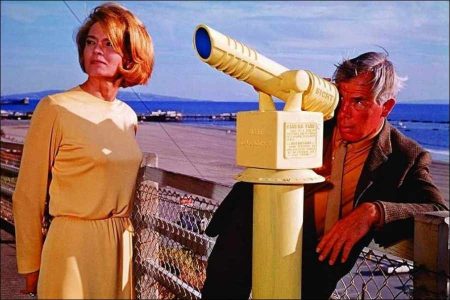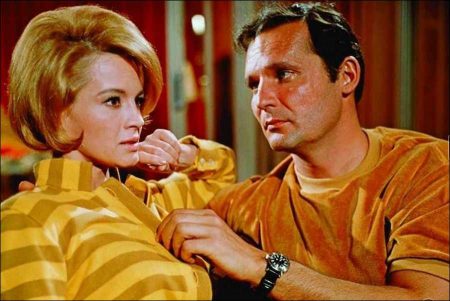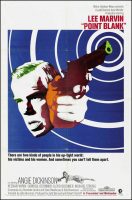Taglines: He thrived on two kinds of people…his victims and his women!
Point Blank movie storyline. Mal Reese is in a real bind–owing a good deal of money to his organized crime bosses–and gets his friend Walker to join him in a heist. It goes off without a hitch, but when Reese realizes the take isn’t as large as he had hoped, he kills Walker–or so he thinks.
Some time later, Walker decides it’s time to get his share of the money and starts with his ex-wife Lynne, who took up with Reese after the shooting. That leads him on a trail–to his wife’s sister Chris, to Reese himself, then onto Big Stegman, then Frederick Carter, then up the line of gangsters in an effort to get money from people who simply won’t acknowledge that they owe him anything.
Point Blank is a 1967 American crime film directed by John Boorman, starring Lee Marvin, co-starring Angie Dickinson, Keenan Wynn and Carroll O’Connor, and adapted from the 1963 crime noir pulp novel The Hunter by Donald E. Westlake, writing as Richard Stark. Boorman directed the film at Marvin’s request and Marvin played a central role in the film’s development. The film grossed over $9 million at the box office in 1967 and has since gone on to become a cult classic, eliciting praise from such critics as film historian David Thomson.
Themes
Viewers and critics have often questioned whether or not the film is really a dream that Walker has after he is shot in the beginning. The film’s director John Boorman claims to not have an opinion on the matter. “What it is, is what you see”, responded Boorman. While filmmaker Steven Soderbergh has described Point Blank as “memory film” for Marvin. Boorman believes the film is about Lee Marvin’s brutalizing experiences in World War II, which dehumanized him and left him desperately searching for his humanity.
Critic David Thomson has written that the character of Walker is actually dead throughout the entire movie and the events of the film are a dream of the accumulating stages of revenge. Others have also considered this concept; Brynn White has questioned whether or not Walker is a mortal or a ghost, “a vaporous embodiment of bitter vengeance barely clinging to Boorman’s variegated frames” and Boorman has commented: “He could just as easily be a ghost or a shadow”. Some critics consider Point Blank, “a haunted, dream-like film that draws upon the spatial and temporal experiments of modernist European art cinema”, especially the “time-fractured” films of French director Alain Resnais.
Style
Point Blank combines elements of film noir with stylistic touches of the European nouvelle vague. The film features a fractured timeline (similar to the novel’s non-linear structure), disconcerting narrative rhythms (long, slow passages contrasted with sudden outbursts of violence), and a carefully calculated use of film space (stylized compositions of concrete riverbeds, sweeping bridges, empty prison cells).
Boorman credits Marvin with coming up with a lot of the visual metaphors in the film. Boorman said that as the film progressed, scenes would be filmed monochromatically around one color (the chilly blues and grays of Acker’s apartment, Dickinson’s butter yellow bathrobe, the startling red wall in Vernon’s penthouse) to give the proceedings a “sort of unreality”.
To establish Walker’s mythic stature, Soderbergh noted in the commentary, that the film cuts from a shot of Walker swimming from Alcatraz Island to a shot of him on a ferry overlooking the same island while a woman on the loudspeaker describes the impossibility of leaving the island. Soderbergh said that this contrast of the character’s ease of escape with the loudspeaker’s monologue makes the Walker character “mythic immediately”.
Point Blank (1967)
Directed by: John Boorman
Starring: Lee Marvin, Angie Dickinson, Keenan Wynn, Carroll O’Connor, Lloyd Bochner, Michael Strong, John Vernon, Sharon Acker, James B. Sikking, Sandra Warner, Roberta Haynes, Kathleen Freeman
Screenplay by: Alexander Jacobs, David Newhouse, Rafe Newhouse
Cinematography by: Philip H. Lathrop
Film Editing by: Henry Berman
Costume Design by: Margo Weintz
Set Decoration by: F. Keogh Gleason, Henry Grace
Art Direction by: Albert Brenner, George W. Davis
Music by: Johnny Mandel
MPAA Rating: None.
Distributed by: Metro-Goldwyn-Mayer
Release Date: August 30, 1967 (SF premiere)
Views: 193


